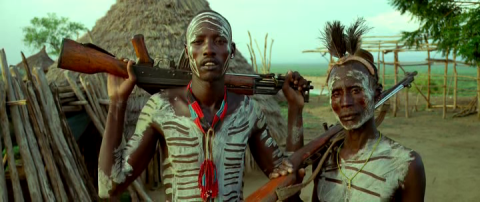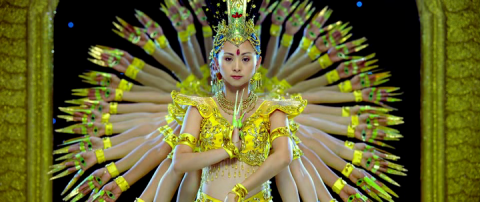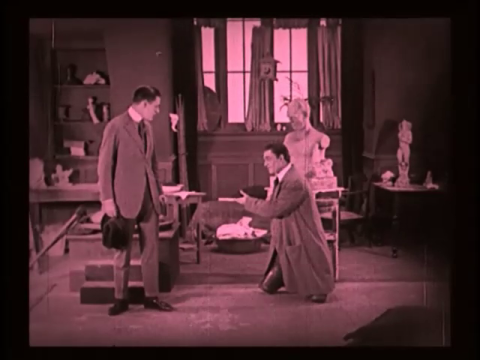This week, the new Tarzan film The Legend of Tarzan is scheduled for its worldwide premiere. While a new Tarzan film used to be a common occurrence (in the 1930s and 1940s there was usually a new one every year), they have not exactly been as common lately. In fact, the latest live action Tarzan film was Tarzan and the Lost City, a pretty bad flick from 1998.
The Internet Archive has a little over half a dozen Tarzan films and serials, but truth be told, most are not good. One of the better is the serial Tarzan the Tiger (episodes 1–7 and 8–15).
Tarzan the Tiger was made just as the silent era was swiftly marching towards its own grave. This serial is an example of a blend that was relatively common around this time. It is essentially silent, but it has a synchronized soundtrack, including some (pretty annoying) sound effects and also the first-ever recorded version of the Tarzan yell. It was, however, a far cry (pun intended) from the later Weissmuller version.
This was the last silent Tarzan, and it marked the end of the first period of Tarzan films also in another way. Starting with the first Tarzan film, Tarzan of the Apes (1918), Tarzan films had always been based, more or less faithfully, on Edgar Rice Burroughs’ books. But with the first true Tarzan sound film, The Ape Man (1932), the stories were original ones, created directly for the movies. Also, the characters and their surroundings changed from the novels, introducing for example the ape Cheeta (who is not still alive, by the way; that is just a myth) and the famous tree house.
But Tarzan the Tiger was still very much rooted in the original Tarzan novels. It has been too long since I read the novel Tarzan and the Jewels of Opar, upon which the serial is based, but my recollection is that the serial follows the original plot fairly well. The traitorous Arnold Werper is there, as is the slave trader Achmet Zek. And most importantly, the jewels of Opar, which everyone wants, and on which the amnesiac Tarzan is positively hung up. If nothing else, the serial is definitely made in the book’s spirit.
With that novel, Burroughs started experimenting with a new plot format, one which involves switching from one character’s point-of-view to another’s and with frequent cliff-hangers. I call this type of novel “the jungle romp”, since it has a number of characters running circles in a jungle, alone or in small groups. They are often completely lost, but in the end they miraculously find one another (and the treasure) in just the nick of time. It is plain that this is a formula which would easily lend itself to the serial style of story telling.
The Jewels of Opar was also Burroughs’ first novel where he used the amnesia cliché. Many critics have said that Burroughs overused amnesia in his plots: it was used several times in the Tarzan series of novels, for example. But in this first, Burroughs was still experimenting, and it actually helps to lift the story and make it more interesting.
Frank Merrill, like so many other screen Tarzans, had a background as an elite athlete. He had been a nationally top-ranking gymnast, and it shows. In terms of physical appearance and ability, he made a splendid ape man. His acting talent was somewhat less splendid, but his over-acting is actually unintentionally funny and helps to raise my level of enjoyment another notch.
The version found at the Internet Archive is, unfortunately, very dark and generally of poor quality. I am not sure if restored versions are available on dvd, but all the versions I have seen on the Internet are like this one, or worse.
This serial is best enjoyed for an abundance of action and sudden plot twists, just like any good serial. On the other hand, one should not expect too much of the acting or scenography.
Tarzan the Tiger
Download links: 1–7 | 8–15
Year: 1929
Running time: 4 h 28 min
Director: Henry MacRae
Stars: Frank Merrill
Image quality: Poor
Resolution: Medium (640×480)
Sound quality: Acceptable
Best file format: DivX







